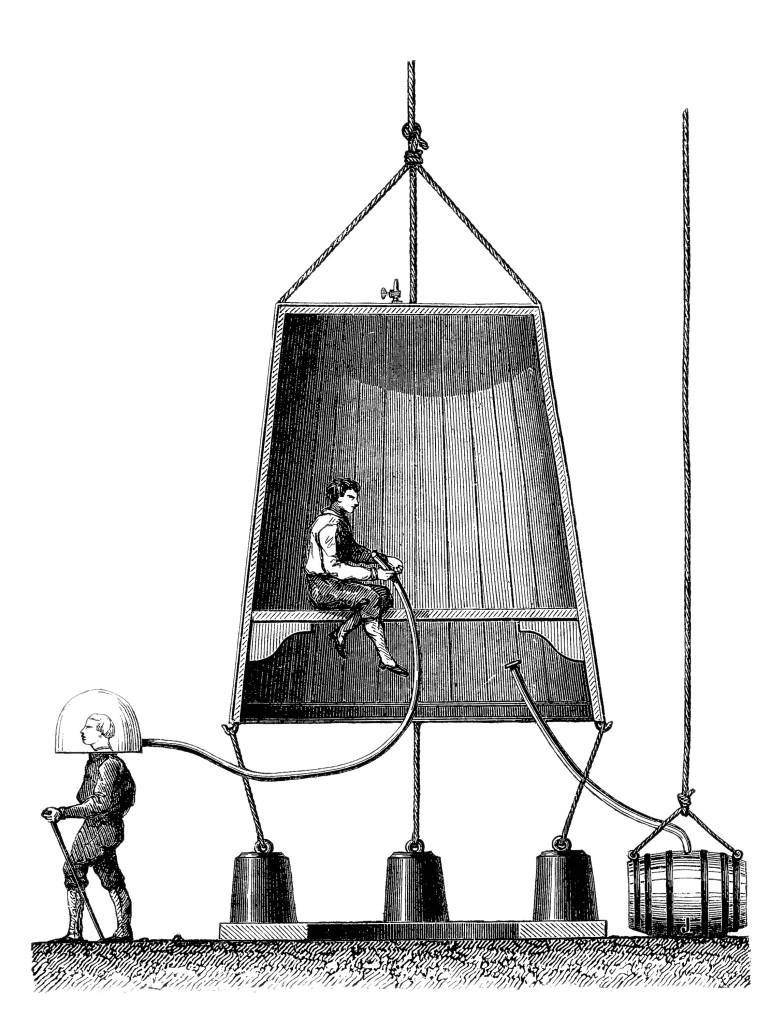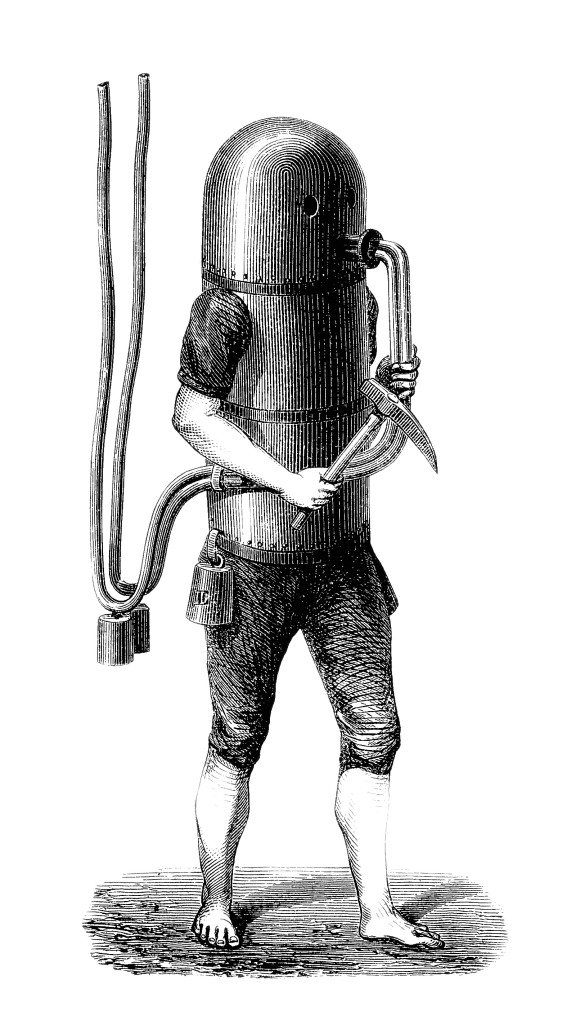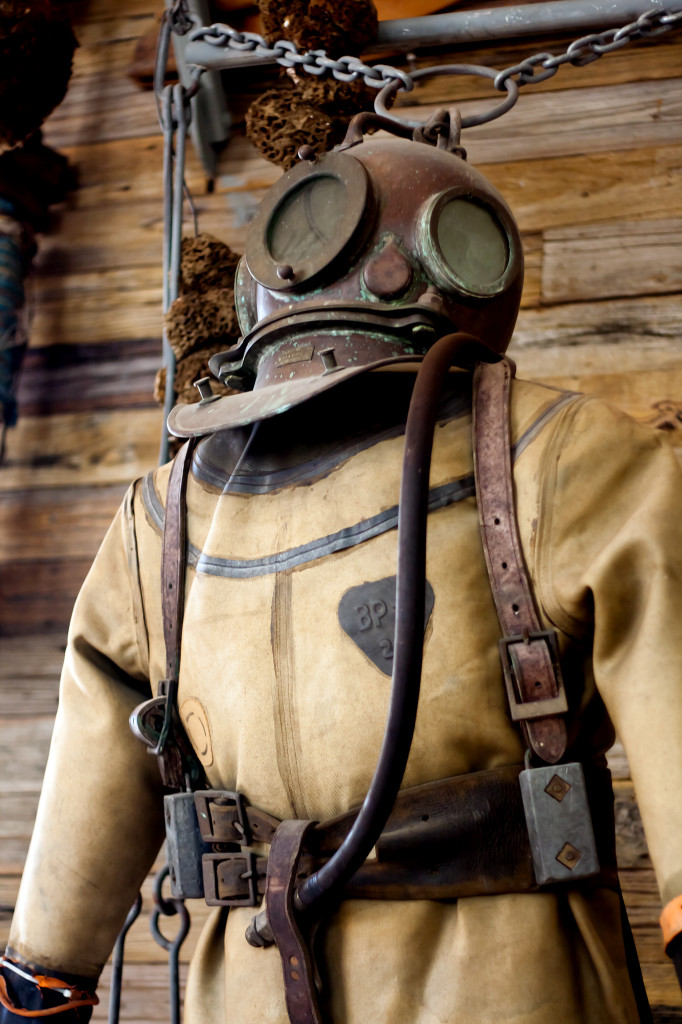The History of Scuba
When it comes to the history of scuba, although equipment produced specifically for the sport has been around for less than a century, the practice of diving, whether to find food, as a military tactic, or just for sheer pleasure goes back many millennia. The history behind the equipment that we use today is a long one, and documents humanity’s fascination with the ocean, and with finding a way to survive beneath the waves. That we are able to dive as we do today is a testament to the bravery and persistence of a long line of inventors, explorers, innovators and adventurers. The history of scuba begins in the ancient world.
Underwater Explorations of the Ancient World
Records dating to 500 BC speak of rudimentary underwater breathing apparatus. According to legend, a Greek soldier held captive on board an enemy ship during Greece’s war with Persia escaped into the water and then launched a stealth attack on his captors’ fleet, using a hollow reed to breathe as he dived to cut the ships loose. A few centuries later, Aristotle chronicled an event in the life of Alexander the Great, whereby the famous king used an upside-down barrel as a kind of diving bell in order to remain undetected beneath the water during the Siege of Tyre. Early diving records by no means belonged solely to the Greeks and the Macedonians, however. In Persia, ancient skin-divers developed goggles using thin slivers of polished tortoiseshell, while in China, divers used a curved pipe to funnel air from the surface in the style of a modern-day snorkel.
The Quest For Autonomy Underwater
As early as the 16th century, men were using diving bells in an attempt to spend more time underwater. These early bells worked by trapping air beneath the curved dome of an open-bottomed wooden structure, from which skin divers would be able to replenish their air supply underwater. Unfortunately, the diving bells of the 16th century did not significantly increase dive times, as the oxygen in the trapped air depleted after a few breaths, forcing divers to return to the surface. Progress came in leaps and bounds in the 18th century, however. In 1715, English inventor John Lethbridge created the first underwater diving machine; although the design was not much more complex than an airtight oak barrel, Lethbridge successfully used his machine to salvage valuables from a number of shipwrecks. His invention made him quite wealthy: one of the ships was a Dutch vessel with over three tons of silver onboard. In 1771, Englishman John Smeaton invented an air pump that allowed air to enter the diving barrel via a hose. Frenchman Sieur Fréminet created the first diving dress that same year, which utilized a reservoir of compressed air that dragged behind the diver as he swam.
Improvements continued apace into the 19th century. In 1825, English inventor William James created a dive helmet that got air from a reservoir in the form of a cylindrical iron belt that held 450 psi. The helmet was made from either thin copper or leather, had a viewing window, and provided enough air for seven minutes underwater. The Royal Navy created the first diving school in 1843, and in 1865 Benoît Rouquayrol and Auguste Denayrouze invented the first diving suit, complete with compressed-air tank, helmet and demand regulator. Despite weighing in at almost 200 pounds, this suit was such a significant step forward in the pursuit of independence underwater that it won the gold medal at the 1867 World’s Fair. Rouquayrol and Denayrouze’s invention became famous in popular culture too, when Jules Verne wrote about it in his novel 20,000 Leagues Under The Sea. Although the suit can be considered the earliest iteration of modern-day dive equipment in terms of its ability to supply air on demand, the valves’ inability to cope with high pressures meant that the suit had to draw air from a surface supply via a hose. In 1878, Henry Fleuss invented the first closed-circuit oxygen rebreather, which was first used to close a submerged sluice door in the Severn Tunnel, and thereafter to rescue workers from flooded mines.
While inventors raced to create the perfect underwater breathing apparatus, physicians started to investigate the effects of diving on the body. Dr. Andrew Smith first studied decompression sickness in the 1870s, but it wasn’t until 1878 that Paul Bert proposed that the condition was triggered by the formation of nitrogen bubbles in the blood. It was Bert who proposed recompression as a possible method of treatment for afflicted divers. In 1908, John Scott Haldane, Arthur Boycott and Guybon Damant produced the first dive tables based on extensive research on the correlation between depth and time spent underwater. In 1912, the U.S. Navy tested the accuracy of those tables, and their findings provided the basis for the recreational dive tables that we use today.
The Emergence of Modern-Day Scuba
Frenchmen Yves Le Prieur and Maurice Fernez designed the first open-circuit scuba system in 1925. The two men used Michelin cylinders filled with three liters of compressed air to replace the surface supply that all previous inventions had relied upon, offering divers a new freedom. Demonstrated first in a Parisian swimming pool in 1926, the cylinder featured a regulator that supplied a continuous flow of air and two gauges. The world’s first dive clubs in California and Paris, which were founded in 1933 and 1935 respectively, used the invention, and the French Navy adopted it as standard. Le Prieur also pioneered the full-face mask to alleviate the mask squeeze that resulted from using goggles. In 1933 another Frenchman, Louis de Corlieu, patented the first scuba fins. By this time, all of the basic elements were in place for Jacques-Yves Cousteau and Emile Gagnan to change the face of scuba forever, with their invention of the aqualung in 1943. The aqualung combined the autonomy of the Fernez-Le Prieur air-supply system with an improved version of the demand regulator developed by Rouquayrol and Denayrouze in 1864. Thanks to them, underwater breathing apparatuses became accessible to the masses, and recreational scuba was born.
In 1952, Australian Ted Eldred refined the regulator design from twin hoses to a single hose, with a two-stage system that delivered air at the same pressure as the water around the mouthpiece. From then on, the improvement, refinement and streamlining of scuba equipment grew in proportion to the sport’s increasing popularity. The first version of the buoyancy control device appeared on the market in the 1960s, in the form of a jacket inflated by a separate cylinder. In 1971, Scubapro improved on this design by adding an inflator hose to the regulator first stage, allowing divers to control their buoyancy using air from their cylinder.
As popular culture became obsessed with the idea of underwater exploration and the world was mesmerized by the documentaries of adventurers like Cousteau, more and more people began diving as a form of recreation. In an effort to standardize diving techniques and reduce accidents, dive-training organizations were formed all over the world, including BSAC in 1953, NAUI in 1960 and PADI in 1966. Today, the dive community is still expanding, with hundreds of thousands of new participants gaining access to the underwater world every year. As of 2013, PADI alone had issued over 22 million certifications throughout its history, proving that the quest for autonomy underwater has brought us a very long way from its origins with a Greek soldier and his reed in 500 BC.




